Q&A: How PBM Practices Were Uncovered in the Ohio Medicaid Program
Antonio Ciaccia, President of 3 Axis Advisors, CEO of 46brooklyn Research, and pharmacy benefits expert, discussed his role in uncovering PBM practices and pharmacy consulting.
Before pharmacy benefit managers (PBMs) were put on the center stage of the pharmacy industry, they were working in the shadows, according to many experts, as drug middlemen deciding what pharmacies were reimbursed for dispensing medicine. In 2016 in the state of Ohio, with the help of several drug-pricing experts, these PBM practices were uncovered.
Now, PBM reform has become one of the hottest topics in pharmacy today, creating a frictious relationship between market-controlling PBMs and struggling pharmacies.
“To the degree with which secrets are already available in the marketplace, meaning they're not secrets, but they're just kind of inaccessible or misunderstood, it's our belief that if something is already in the public domain, people should have a maximal understanding of it so that we don't become part of the problem,” said Antonio Ciaccia, president of 3 Axis Advisors and CEO of 46brooklyn Research. “If people have to hire us to figure out drug-pricing riddles, I would argue that the complexity of the system, that necessitates people hiring us or other consultants, is arguably more waste than the system.”
Ciaccia recently joined Drug Topics to discuss his role in uncovering PBM practices in the Ohio Medicaid program and what he is up to now regarding his work at 3 Axis Advisors and 46brooklyn Research. Read through our conversation with Ciaccia as he describes his expert experience in educating the industry on the complex drug-pricing system in the US.
READ MORE:
Drug Topics: How did you get into your line of work regarding pharmacy consulting and bringing PBM practices to light?
Antonio Ciaccia: I'm a former pharmacy guy. I did about 10 years at the Ohio Pharmacists Association and learned about drug pricing and PBMs from what is arguably the biased perspective of pharmacists who are on the receiving end of PBM reimbursements. Prior to that, I would have assumed that pharmacists, being the experts on the medications, also knew essentially everything there was to know about the pricing of medicines as well. What I learned over time is that, in essence, pharmacists are passengers in the drug-pricing vehicle with very little control over the end cost to the consumer and the plan sponsor. Over time, as I learned that pharmacists obviously—again, whether they're paid reasonably or not—there was a disconnect between what pharmacists were paid. Then, on the other end of the transaction, what was occurring from a plan sponsors perspective, those that are paying for the drugs on behalf of government programs or employers across the country.
In 2016, there were some major cuts to pharmacy reimbursements within the Ohio Medicaid program. As I was trying to understand why those cuts were occurring and asking state officials whether or not they made budget cuts that would result in those underpayments, what I learned was that they were spending more for medicines than they ever had. While I didn't know a lot of the time, those 2 things didn't make sense to me. If it's the same transaction, and at the end of it, the amount is becoming less, but on the front of that transaction, the amount is becoming more, clearly something was being lost in the middle. We started to download information from the Centers for Medicare and Medicaid Services (CMS), one delineating the national average drug acquisition cost, which is a proxy for what pharmacies pay to acquire drugs. Then, we also downloaded CMS’ state drug utilization data, which is tracked for the purposes of the Medicaid drug rebate program. But what it does is it gives us a state-by-state, quarter-by-quarter, drug-by-drug accounting of the average cost states are incurring to pay for medications in the Medicaid program. When you stitch them together, you saw this growing divergence over time that the state was getting charged more while the underlying costs of medicines were going down. Now we knew pharmacies were getting less and less of a slice of the in-between, so it led us to believe that there was spread pricing going on within the Ohio Medicaid program. Spread pricing [is] the difference between what a PBM pays a pharmacy and then charges their client.
We ended up presenting that information to state officials. State officials chose not to digest that information and do anything with it. We did what we felt was right, which was publish it. We went to the Columbus Dispatch, which is a large newspaper here in Ohio, and we brought it to Robert Langreth over at Bloomberg News nationally. And voila, it prompted a multi-year investigation and then an audit from our state auditor in Ohio, Dave Yost. The crumb trail that we were chasing was directionally accurate, and they found $245 million that PBMs were arbitraging out of the Medicaid program—essentially buying low or paying pharmacies low, billing high, charging the state high, and pocketing the difference.
We decided to launch an organization called 46brooklyn Research in 2018 that became the publishing home of all those learnings, and not just for Ohio, but every state across the country. That was intended to be what I would just call supplementary to what I was doing at the Ohio Pharmacists Association, to essentially start giving people better information about what it is an otherwise very opaque and misunderstood transaction. I never considered myself an entrepreneur, and so really, it was meant to be kind of a sandbox of drug-pricing journalism. We quickly learned that this is a big deal because a lot of Medicaid programs had no understanding that this was happening. We also learned that many employers and other government programs also seemed to lack some of the foundational knowledge that I took for granted, that many people would understand. We decided to launch a consulting firm called 3 Axis Advisors in 2019, which was intended to what I would call supplemental income, because we had law firms that were asking for expertise. I had no desire to become a drug-pricing consultant in my career, and so I didn't trust my ability to be able to make full-time work out of it, nor did I have an understanding that maybe there was even full-time work available. I quickly learned that that was not the case. Obviously, when you can help uncover millions of dollars in hidden markups, there are a lot of people that would like to eliminate those markups and find ways to pay for them.
Fast forward the tape, we run 46brooklyn Research as a nonprofit dedicated to making drug-pricing data more easily understandable and accessible to the general public. And then, with 3 Axis Advisors, we do work for employers, provider groups, research firms, advocacy coalitions. We do work for industry disruptors like Mark Cuban's Cost Plus Drug Company, Blue Shield of California, and we've also done work for state auditors and state attorneys general and Medicaid programs. Back to 46brooklyn. The end goal is to say, I think that it's great that people want to hire us to do work on the consulting side, but I also think that there's enough information in the public domain that maybe you don't need to hire people like us to figure this out. I've always believed that, to the degree with which secrets are already available in the marketplace, meaning they're not secrets, but they're just kind of inaccessible or misunderstood, it's our belief that if something is already in the public domain, people should have a maximal understanding of it so that we don't become part of the problem. If people have to hire us to figure out drug-pricing riddles, I would argue that the complexity of the system, that necessitates people hiring us or other consultants, is arguably more waste than the system.
READ MORE:
Are you ready to elevate your pharmacy practice? Sign up today for our
Newsletter
Pharmacy practice is always changing. Stay ahead of the curve with the Drug Topics newsletter and get the latest drug information, industry trends, and patient care tips.






































































































































